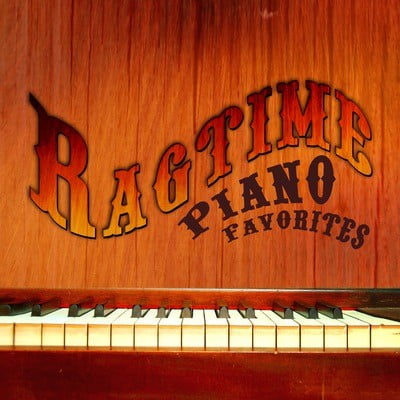
Many of the other rags favor leisurely tempos, and Tony Caramia, who teaches at the Eastman School of Music, performs them with the proper gentle pace. The individual composers offer some unique touches, such as a jazzy virtuosity in Robert Frost's piece for the 1984 Olympics, or the dueling key signatures of Minnie-Rag by Sydney Hodgkinson. Most of the rest of the material here is really quite traditional. Some of these later-day ragsters add distinctly late-20th-century touches, including the playful dissonance of Bolcom, and especially, the Phillip Glass-style droning of the Minimalist Rag by Kevin Putz, which is barely recognizable as the same format that Joplin worked in. Joplin was fully aware of the theatrical possibilities of the format, and was not averse to adding a programmatic spin to some of his own pieces. Review: "These "new" rags are generally faithful to the spirit of the golden age of ragtime, as exemplified by Joplin. Various auditory repasts offer composers a choice of forms and influences from such divergent sources as jazz, non-Western music, romanticism, dodecaphony, minimalism, pop and rock, asceticism, cross-over, and spiritualism and all on the same menu! This variety serves both as a high-calorie, vibrant sign of our own creative times, and as a demanding burden placed upon American composers seeking, indeed groping for, their own unique voices: +Red or green peppers? Radish? How much onion? What kind of lettuce? How do I choose my OWN language that will allow me to speak what I need to say?' The works recorded on this disc present the distinct and often unusual offerings of a few leading, contemporary American +workers' in this sonic kitchen." The pianist for this disc, Tony Caramia, is associate professor of piano at the Eastman School of Music, where he is director of piano pedagogy studies and coordinator of the class piano program. While actually not a true novelty rag, it was certainly a pioneering effort in that direction and one of the most well known pieces of a style that would ultimately become a display of pianistic prowess.
#Ragtime musical compser series#
The works represented in this Eastman American Music Series of new music recordings bear eloquent testimony to the effect this healthy and diverse musical diet has had on the work of American composers. Felix Arndt - 1915 What the Mississippi Rag is to piano ragtime, Nola is to the genre of Novelty piano solos. In striking contrast to this earlier era, today's younger generation of composer benefits from exposure to what has been called a +veritable salad bowl of styles,' marked by an extremely wide range of character, aesthetics and musical cross-currents. Sydney Hodkinson, the producer for this series of Eastman recordings says: "From roughly the late 1930s through the early sixties, most serious American composers worked within one of two basic musical encampments, continuing and expanding upon traditions established by the 20th century giants Schoenberg and Stravinsky. Scott Joplin, the father of ragtime and one of the most influential composers of American popular song, died in New York City on April 4, 1919.Go Back > Something different for rag fans - new works in the classic traditions! While the music on this recording is not Scott Joplin, it most certainly does capture the flavor of old time rags. Other Joplin compositions include “Peacherine Rag” (1901), “Palm Leaf Rag-A Slow Drag” (1903), and “Euphonic Sounds” (1909) and a work that contains his explanation of ragtime style, “The School of Ragtime: Six Exercises for Piano”(1909).

Joplin's music underwent a great revival after his rag “The Entertainer” was used in the 1973 film The Sting, after which Treemonisha was staged with great success in 1975 by the Houston Grand Opera. Staged in concert version in 1911, it failed with the audience, leaving the composer's spirit permanently broken. In 1911, at his own expense, he published his opera Treemonisha, a work intended to go beyond ragtime to create an indigenous black American opera.

Since ragtime was conceived and developed before records were invented, it was 'recorded' on piano rolls. One of ragtime’s inventors and most important pianists and composers was Scott Joplin. While in Missouri, he published “Original Rags” and “Maple Leaf Rag” (both in 1899) and opened a teaching studio. Ragtime is primarily an African American invention and was a source of pride to African American composers, musicians, and listeners. In 1893 he played at the World's Columbian Exposition in Chicago, and in 1894 he moved to Sedalia, Missouri. In his teens he became an itinerant pianist in the low-life districts that provided the chief employment for black musicians. Scott Joplin, American composer and pianist, was one of the most important developers of ragtime music.īorn in Texarkana, Texas on November 24, 1868, Joplin taught himself piano as a child, learning classical music from a German neighbor, Louis Chauvin.


 0 kommentar(er)
0 kommentar(er)
